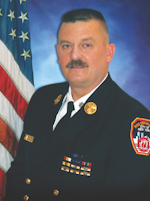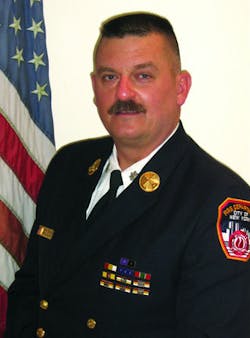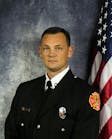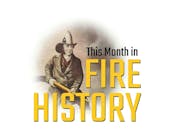The Fire Scene: “The Mission, the Men, & Me”
The title of this article is actually the title of a book that introduced me and many other readers to the “3 Ms." As you have probably figured out, the 3 Ms are the mission, the men and me. The author, Pete Blaber, a Delta Force Commander, was introduced to this concept by his commanding officer when he was a new second lieutenant. While reading this book, I immediately realized the amazing similarity between a new second lieutenant in the military and a new company officer in the fire service. Let’s take a look at this interesting concept and how it can be helpful to you.
3 Ms defined
Let’s define the 3 Ms first. The mission is the assignment or job that needs to be handled. For us in the fire service, it could be fighting a fire, extricating a victim from a vehicle or finding a lost child. The job or assignment is the first priority. Decisions need to focus primarily on getting the job done. The men are your firefighters. After handling the mission, the priority is to take care of them. Their needs need to be satisfied and their welfare secured, which in turn allows them to concentrate on completing their mission. Lastly is me. Me is you, the officer. Please note that you are last. This is not accidental, but rather part of the design of this unique concept.
When I’m out on the road talking about leadership and company officer skills, I always ask the group, “If we are all public servants, what are company officers?” The answer of course is firefighter servants! Yes, company officers are not the most important, privileged or pampered members of the fire company, but rather, their personal needs and comfort come last, after the needs and welfare of their crew. The officer riding the front seat has many responsibilities to the department, the community and their crew. Every decision, every order and every action should be based on the priority that these three elements are in. Let’s take a look at several firehouse situations where this “firefighter servant” concept can be applied.
Applying the concept
An engine company returns to quarters from a multiple-alarm fire where the engine crew worked for several hours in heavy snow and bone-chilling temperatures. The department has not covered this company with a relocated unit, so the firehouse is empty. The chief instructed the captain to get the company back in service immediately because many of the city’s other fire companies are still operating at the fire. What must the captain make sure happens first? Well, if we follow the 3 Ms, it’s the mission. The mission is to get the engine back in service. The booster tank must be filled with water because it was drained at the scene. Some of the hose is frozen and must be replaced with dry hose from the hose rack on the apparatus floor. The SCBA cylinders must all be examined and replaced if necessary, and several new spare cylinders need to be placed into the compartment on the rig. The engine driver must refuel the rig since its engine was running for several hours and it is less than half full. Finally the firefighters and the captain must change their frozen, wet and cold PPE for their dry second set of gear off the racks.
Now that the mission is handled, what’s next? The firefighters! The captain tells the crew to get upstairs and get showered and cleaned up and dressed in dry uniforms. The firehouse boiler does not produce a tremendous amount of hot water, so the officer tells the firefighters to make their showers short and hold off on running the washing machine with their dirty uniforms. The engine driver, a senior member, tells the captain that the rig is back in service and asks if anything else needs to be done. The captain tells the driver to make sure all the firefighters get a hot shower and to tell him when they are all done.
Twenty minutes later, the senior firefighter knocks on the captain’s door and tells him that the crew is showered, dressed and down on the apparatus floor taking care of some of the smaller details, like hand tools and cleaning the rig up. Several of them head into the kitchen and start working on preparation of the evening meal. What is the captain doing right now? He is in the officer’s bathroom, taking a cold shower. That’s right, the last of the 3 Ms is me. And if you’re an officer, it’s you! Only after handling your mission and taking care of your firefighters should you be taking care of your own comfort or needs.
Nice job, Cap!

John J. Salka Jr. | Battalion Chief
JOHN J. SALKA JR., who is a Firehouse contributing editor, retired as a battalion chief with FDNY, serving as commander of the 18th battalion in the Bronx. Salka has instructed at several FDNY training programs, including the department’s Probationary Firefighters School, Captains Management Program and Battalion Chiefs Command Course. He conducts training programs at national and local conferences and has been recognized for his firefighter survival course, “Get Out Alive.” Salka co-authored the FDNY Engine Company Operations manual and wrote the book "First In, Last Out–Leadership Lessons From the New York Fire Department." He also operates Fire Command Training, which is a New York-based fire service training and consulting firm.






